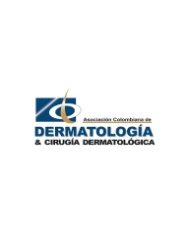Desafíos terapéuticos en onicomicosis
Keywords:
onicomicosis, terapéutica, terbinafina, itrconazol, fluconazol, cicloperoxalamina, amorolfinaAbstract
El tratamiento de las onicomicosis constituye un reto terapéutico. La pobre penetración de los antimicóticos tópicos, el recambio lento de las uñas, principalmente de los pies, la variedad de agentes causantes, el aumento de la frecuencia de hongos no dermatofitos, el aumento de la población de inmunosuprimidos, entre otros, son factores que dificultan más este tratamiento.
Afortunadamente cada vez se estudian nuevos agentes. Tópicamente, la cicloperoxolamina en laca ha sido aprobada por la FDA, con indicaciones específicas en onicomicosis. La amorolfina al 5% en combinación comienza a ser estudiada con buenos resultados.
Finalmente, existen en el mercado drogas de reconocida eficacia como la terbinafina en forma continua, y el itroconazol, éste último cada vez con más evidencia de su utilidad en pulsos. Aún existe mucha controversia respecto a la efectividad de la terapia intermitente del fluconazol.
Author Biography
Angela Zuluaga de Cadena, Instituto de Ciencias de la Salud, CES
Docente Dermatología, Instituto de Ciencias de la Salud (CES), Medellín.
References
https://doi.org/10.1046/j.1365-4362.1999.00015.x
2. Richardson M, Elewski B. Superficial fungal infections. Oxford; Health Press, 2000.
3. Zaias N, Rebell G. Chronic dermatophytosis caused by Trichophyton rubrum. J Am Acad Dermatol 1996; 35:S17-20.
https://doi.org/10.1016/S0190-9622(96)90065-1
4. Zaias N. Onychomycosis. Arch Dermatol 1972; 105:263-27 4.
https://doi.org/10.1001/archderm.1972.01620050069017
5. Roberts DT, Evans EGV. Subungueal dermatophytoma complicating dermatophyte onychomycosis. Br J Dermatol 1998; 138:189-190.
https://doi.org/10.1046/j.1365-2133.1998.02050.x
6. Tosti A, Baran R, Piraccini BM, et al. Endonix onychomycosis: a new modality of nail invasion by dermatophytic fungi. Acta Dermatol Vener 1999; 79:52- 53.
https://doi.org/10.1080/000155599750011714
7. Ellis OH, Marley JE, Watson AB, et al. Significance of non-dermatophyte moulds and yeasts in onichomycosis. Dermatology 1997; 194: S40-42.
https://doi.org/10.1159/000246184
8. Zuluaga A, Tabares A, Arango M, et al. Importancia creciente de los géneros Fusarium y Scytalidium como agentes de onicomicosis. Rev ACD y CD 2001; 9:593-599.
9. Tosti A, Piraccini BM, Lorenzi S. Onychomycosis caused by nondermatophytic moldas: Clinical features and response to treatment of 59 cases. J Am Acad Dermatol 2000; 42:217-224.
https://doi.org/10.1016/S0190-9622(00)90129-4
10. English MP. Nails and fungi. Br J Dermatol 1976 94:697-701
https://doi.org/10.1111/j.1365-2133.1976.tb05171.x
11. Alam M, Scher RK. Current topics in nail surgery. J Cutan Med Surg 1999; 3:324-335.
https://doi.org/10.1177/120347549900300611
12. . Cohen PR, Scher RK. Topical and surgical treatment of onychomycosis. J Am Acad Dermatol 1994; 31 :S74-77.
https://doi.org/10.1016/S0190-9622(08)81273-X
13. Niewerth M, Korting HC. The use of systemic antimycotics in dermatotherapy. Eur J Dermatol 2000; 10:155-160.
14. Bohn M, Kraemer KTH. Dermatopharmacology of cicloperox nail lacquer topical solution 8% in the treatment of onychomycosis. J Am Acad Dermatol 2000; 43:S57-69.
https://doi.org/10.1067/mjd.2000.109072
15. GuptaA, Fleckman P, Baran R. Ciclopirox nail lacquer topical solution 8% in the treatment of toenail onychomycosis. J Am Acad Dermatol 2000; 43:S70-80.
https://doi.org/10.1067/mjd.2000.109071
16. Gupta A, Baran R. Cicloperox nail lacquer solution 8% in the 21st century. J Am Acad Dermatol 2000; 43: S96-1 02.
https://doi.org/10.1067/mjd.2000.109068
17. Daniel CR. Tradicional management of onychomycosis. J Am Acad Dermatol 1996; 35:S21-25.
https://doi.org/10.1016/S0190-9622(96)90066-3
18. Arrese JE, Piérard-Franchimont C, Piérard GE. Facing up to the diagnostic uncertainty and management of onychomycosis. lnt J Dermatol 1999; 38:S1-6.
https://doi.org/10.1046/j.1365-4362.1999.00007.x
19. Gupta AK, Scher R, De Doncker P. Current management of onychomycosis. Dermatol clinic 1997; 15:121-135.
https://doi.org/10.1016/S0733-8635(05)70420-4
20. Del Rosso JO, Gupta A. The use of intermittent itraconazole therapy for superficial mycotic infections: a review and update on the "one week" approach. lnt J Dermatol 1999; 38:S28-39.
https://doi.org/10.1046/j.1365-4362.1999.00011.x
21. Gupta AK, Scher RK, Rich P. Fluconazole for the treatment of onychomycosis: an Update. lnt J Dermatol 1998; 37:815-820.
https://doi.org/10.1046/j.1365-4632.1998.00564.x
22. Ling MR, Swinger LJ, Taylor M, et al. Once-weekly fluconazole (450) for 4, 6 or 9 months of the treatment for distal subungueal onychomycosis of the toenail. J Am Acad Dermatol 1998; 38:S95-102.
23. Havu V, Heikkila H, Kuokkanen K, et al. A doubleblind, randomized study to compare the efficacy and safety of terbinafine (Lamisil) with fluconazole (Diflucan) in the treatment of onychomycosis. Br J Dermatol 2000; 142:97-102.
https://doi.org/10.1046/j.1365-2133.2000.03247.x
24. GuptaAK, Konnikov N, Lynde CW. Single-blind, randomized, prospective study on terbinafine and itraconazole for treatment of dermatophyte toenail onychomycosis in the elderly. J Am Acad Dermat 2001; 44:479-484.
https://doi.org/10.1067/mjd.2001.110874
25. Baran R, Feuilhade M, Datry A, et al. A randomized trial of amorolfine 5% solution nail lacquer combined with oral terbinafine compared with terbinafine alone in the treatment of dermatophytic toenail onychomycosis affecting the matrix region. Br J Dermatol 2000; 142:1177-1183.
https://doi.org/10.1046/j.1365-2133.2000.03545.x
26. Lecha M. Amorolfine and itraconazole combination for severe toenail onychomycosis; results of an open randomized trial in Spain. Br J Dermatol 2001; 145:S21-S26.
https://doi.org/10.1046/j.1365-2133.2001.00044.x
27. De Doncker PRG, Scher RK, Baran RI, et al. ltraconazole therapy is effective for pedal onychomycosis caused by sorne nondermatophyte molds and in mixed infection with dermatophytes and molds: A multicenter study with 36 patients. J Am Acad Dermatol 1997; 36:173-177.
https://doi.org/10.1016/S0190-9622(97)70275-5
28. Tosti A, Piraccini B, Lorenzi S. Onychomychosis caused by nondermatophytic molds: Clinical features and response of treatment of 59 cases. J Am Acad Dermatol 2000; 42:217-224.
https://doi.org/10.1016/S0190-9622(00)90129-4
29. Gupta A, Daniel GR. Onychomycosis: Strategies to reduce failure and recurrence. Cutis 1998; 62:189.
30. Gupta A, Konnifov N, Lynde CW, et al. Onychomycosis: predisposed populations and sorne predictors of suboptimal response to oral antifungal agents. Eur J D 1999; 9:633-638.
How to Cite
Downloads

Downloads
Published
How to Cite
Issue
Section
| Article metrics | |
|---|---|
| Abstract views | |
| Galley vies | |
| PDF Views | |
| HTML views | |
| Other views | |






